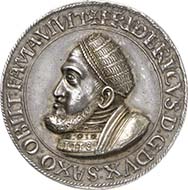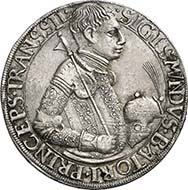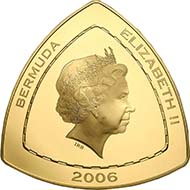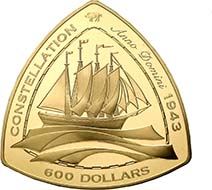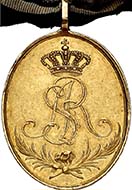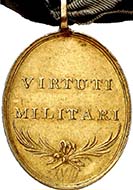19-06-2011 – 23-06-2011
Auction 188-192
Collection of Saxony completely liquidated
From June 20 to June 24, 2011 the German auction house Künker had its sale 188 to 192. The results? Convincing, as always. 7,000 lots sold for more than 9.2 million Euro hammer price.
Over 7,000 lots and several important collections in five catalogues; 3,000 bidders and a total result of 9,2 million Euros, hence 52 percent more than the estimates; additionally two academic lectures and a reception in the “Friedenssaal” (= hall of peace) of the Osnabruck Town Hall – the auction house Künker, which celebrated its 40th birthday only recently, made an extraordinarily successful summer auction. The reception by Mayoress Karin Jabs-Kiesler, by the way a historian enthusiastic about coins, was held for the customers from abroad of the leading auction house. In the 500-year-old town hall it has been spotted some time ago that Künker has made the city of Osnabruck a hub for international numismatics.
But first a “home match”: catalogue 188 contained a collection of 122 Osnabruck coins, which yielded 236,000 Euros instead of its estimate of 126,000 Euros. On the second day the Collection Saxony of an Osnabruck citizen by choice followed; it was the collection of Gerhart Rother, Saxon by birth. In the crowded auction hall the 1,115 lots of catalogue 189 sold without exception, though not at the expected price of 740,000 Euros, but for more than 1.2 million Euros. Already the evening before the sale, Prof Dr. Paul Arnold had put the auction participants into the right mood for that truly exiting collecting field. The designated Eligius Prize bearer 2011 from Dresden gave a lecture on the “Commemorative coins of Saxon Elector Frederick the Wise – coins or medals?” Many a “coin” the imperial governor had minted in Nuremberg turned out to be a representative medal – the publication of Arnold’s work is excitedly anticipated.
1549: SAXONY. Frederick III the Wise (1486-1525). Partly gilded silver medal 1532. Katz 55 a. Coll. Merseb. 421. Of great rarity, examined original, patina, partly gilded, EF. Price realized: 18,000 Euros.
The Collection of Saxony, which was thanks to Bohemian bracteates and pieces minted for Poland likewise “international”, comprised several rarities. Three cases in point: the 3 reichsthalerklippe 1676 of Elector John George II (estimate: 10,000 Euros) sold for 28,000 Euros. 32 groschen 1709 of Frederick August I (7,500 Euro) was available for purchase only at 35,000 Euros. One additional grand was charged by Frederick August III (I) for his double konventionsthaler 1780 of which only 20 examples are available.
After the Saxon accent, French voices filled the auction room since an important private collection from France including many trial pieces and interesting series was liquidated in catalogue 190. An angelot d’or without date (4,000 Euros) of Henry VI of England, 1422-1453, achieved 24,000 Euros. A piéfort of the 5 franken essai 1853 with its weight of 54.89 grams yielded the impressive sum of 41,000 Euros (estimate: 2,500 Euro). Example no. 3: a sample piaster 1879 for French Cochinchina in PP rose from 10,000 to 26,000 Euros. If you want to know more about the historic background of this precious piece, we will recommend reading an article of CoinsWeekly. Please, click here.
357: TRANSYLVANIA. Sigismund Bathory (1581-1602). Reichsthaler 1589. Dav. 8800. Resch 35. Very rare, EF. Price realized: 60,000 Euros.
Gold sells better than ever; which makes it impossible to list all highlights of catalogue 191. Here are just a few examples: the Cracow 5 ducat 1611 of Polish King Sigismund III, a perfect piece in more than one respect, rose from 30,000 to 70,000 Euros. On the first day, the reichsthaler 1589 of Sigismund Bathory (7,500 Euro) sold for impressive 60,000 Euros and draw attention to the collecting field Transsylvania. The next day, the Hungarian principality even did one better in the gold catalogue with a number of results as high as 44,000 Euros. For 100 Lire 1880 of Italian King Umberto I (50,000 Euro) 48,000 Euros sufficed.
5402: BERMUDAS. Elizabeth II (until 1952). 600 dollars 2006, from the series “Bermuda Shipwrecks”. Fb. cf. 44 (from 2007). Gold, mintage only 30 pc., PP. Price realized: 34,000 Euros.
34,000 Euros were dumped in the Bermuda triangle, as it were, for that was the result of the triangular heavy gold coin of 600 dollar of the Bermudas, minted in 2006 in commemoration of the sinking of the tall ship “Constellation” in 1943.
German collecting fields were well-represented. To mention an unedited unique from Prussia: the Friedrichs d’or 1756 A of Old Fritz (5,000 Euro) is missing with v. Schrötter and in this year also with Olding; it was sold for 9,500 Euros. Part 2 of catalogue 191 contained German Coins before 1871, which always sell well. The sour-looking facial expression of Bavarian King Louis III notwithstanding, his dreimark piece, struck in 1918 on the occasion of his golden wedding, brought after all 21,000 Euros instead of its estimated 17,500 Euros. Because of the silver shortage immediately after World War I, only 130 of these anniversary coins were produced. Not significantly more frequent are the 2,000 10 New-Guinea-mark produced in 1895. The piece on offer, estimated at 25,000 Euros, made 27,000 Euros.
Russia, part 1 of catalogue 192, sold better than estimated, too. The 10 rouble piece of Tsar Peter III brought 38,000 Euros (35,000 Euros), the very denomination 1886 of Alexander III yielded 26,000 Euros (10,000 Euros).
8683: POLAND. Gold medal “Virtuti Militari” (1792), War Order of Virtuti Militari (1792), respectively, Military Medal of the Duchy of Warzaw (1807), respectively, Polish Military Medal (1815), respectively, Military Award Virtuti Militari (until 1919)”, 1st model. RRRR, II. Price realized: 80,000 Euros.
How to rate orders and decorations – see part 2 of catalogue 192 – is a trickier one with numismatists. Künker’s expert on phaleristics, Michael Autengruber from Konstanz, spoke about “Decorations between original and counterfeit – a conceptual differentiation to numismatics”. The field of orders as well as badges of honor and commemoratives was more complex, which is why the question of authenticity is not as easily answered as with coins. “A replica”, says Autengruber, “is harmless, a counterfeit isn’t.” There was a need for clear declaration of the pieces, and this need was met in Osnabruck. Roughly 1,000 lots were available and instead of estimated 360,000 Euro auction house Künker made 560,000 Euros.
The gold medal of the first models of “’Virtuti Militari‘ (1792), War Order of Virtuti Militari (1792), respectively, Military Medal of the Duchy of Warzaw (1807), respectively, Polish Military Medal (1815), respectively, Military Award Virtuti Militari (until 1919)”, respectively, was estimated at 50,000 Euros. When this lot was called, there was excitement in the auction room. Finally a bidder via telephone won, at the price of 80,000 Euros. The very next medal of the same order, but in silver, exceeded its estimate of 5,000 Euros several times by achieving 38,000 Euros. Both specimens from the Kingdom of Poland were understood to leave the international hub and head for home, the Republic of Poland.
A small footnote to the Osnabruck summer auction: only 40 lots went into re-sale. All further information is available not only in the catalogues and the result list but also on the Internet.





